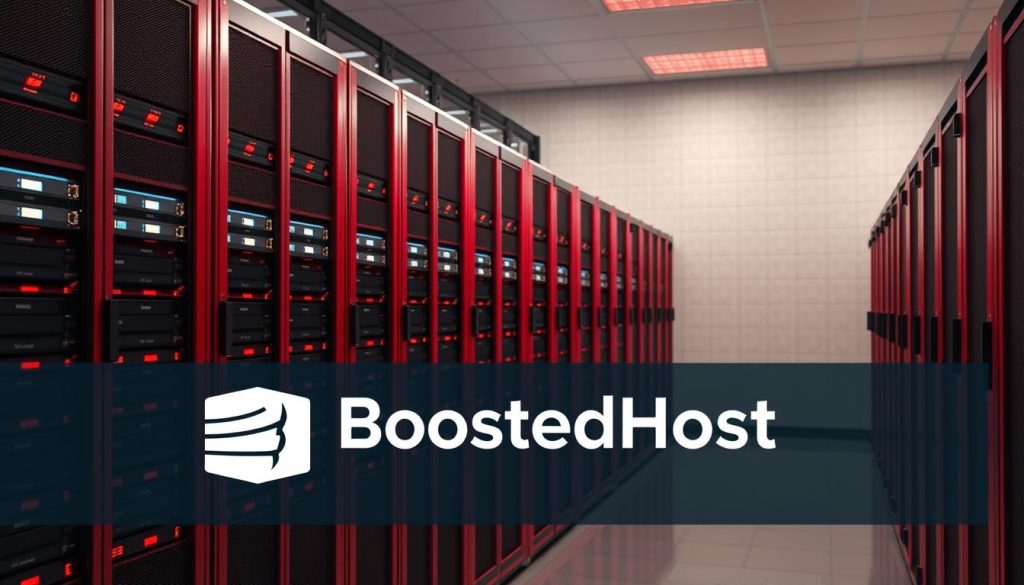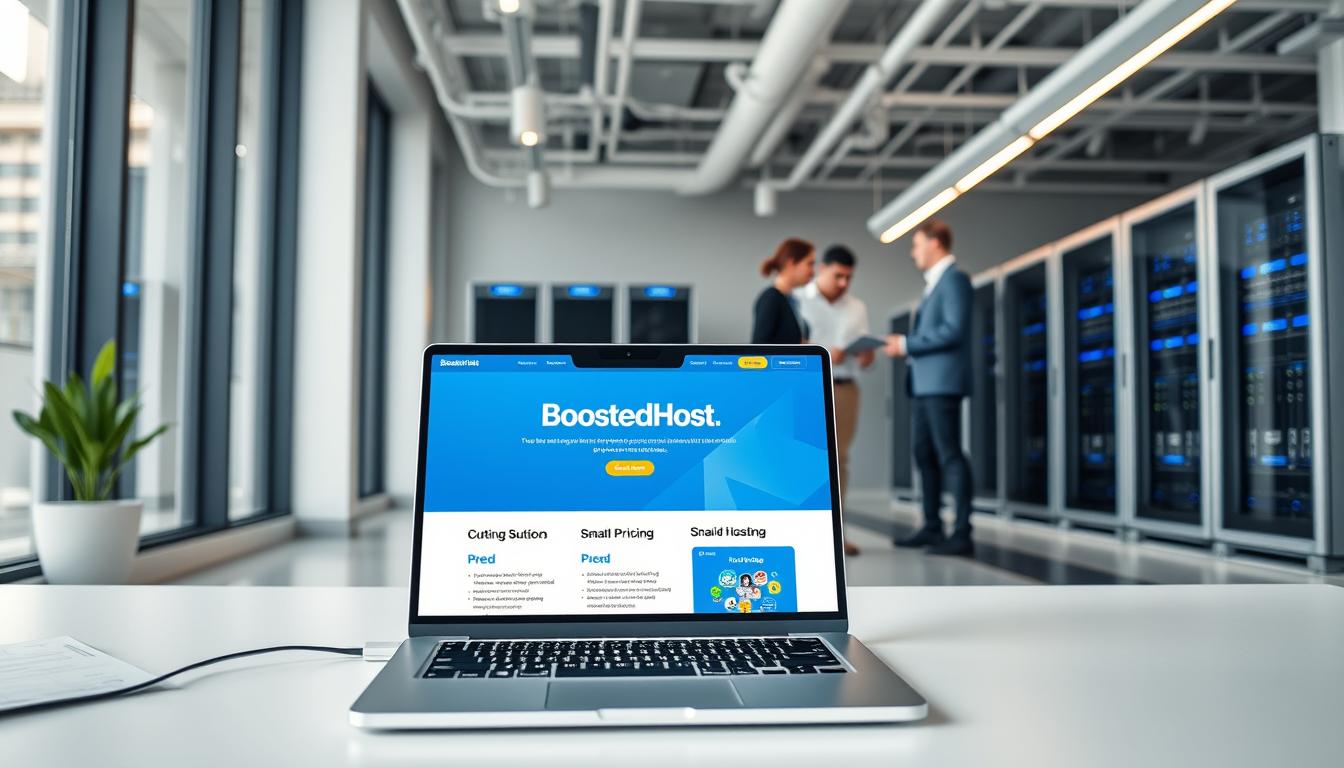We’ve felt the sting of a slow site at the worst possible moment. It hurts traffic, sales, and trust. We built this guide to cut through marketing noise and help you pick the right provider for your needs—fast, clear, and honest.
We’ll set the stage with data and real tests. One contender focuses on ultra-fast delivery, managed WordPress ease, AI site builds, and clear pricing. The other offers raw compute and flexible hardware for custom stacks. Our lens is simple: how does each choice affect page speed, uptime, and daily operations?
Expect hands-on comparisons of performance metrics and practical outcomes for your website. We translate numbers into business impact so you can decide with confidence.
Key Takeaways
- Performance and uptime drive conversions—choose the stack that matches your traffic and goals.
- Transparent pricing matters—watch for add-on costs vs included features.
- Included tools and backups boost real-world value for managed sites.
- Pick managed hosting for speed and support; pick raw compute for custom workloads.
- This review focuses on measurable outcomes: speed, security, and total cost of ownership.
BoostedHost and Cherry Servers at a glance for United States buyers
We cut straight to what matters for U.S. buyers: reliability, speed, and cost.
Managed hosting here means Swiss-grade reliability, sub-200ms global TTFB, and a 99.99% uptime SLA combined with one-click tooling and Orbit AI for rapid site builds. That setup targets website owners who want fast launches, transparent prices, and 24/7 expert support.
The other option runs six data center locations across three continents, including the United States. Its core offerings span Cloud VPS, VDS, Dedicated, and GPU instances. Billing is hourly, so it’s ideal for bursty tests and variable workloads.

- Buyer fit: Managed for simple, high-speed websites; self-managed for custom infrastructure.
- Offerings: Web/Managed WordPress and AI builder vs Cloud VPS, VDS, Dedicated, GPU.
- Billing & prices: Transparent monthly plans vs flexible hourly billing and sample Cloud VPS prices from 6.00€–39.00€.
- Setup & support: Guided Plesk and fast support vs self-managed setup augmented by backups, load balancers, DDoS protection, and SSH keys.
- Performance signal: Average provisioning ~452 seconds and a consistency score of 52 on VPSBenchmarks—expect ~10-minute deployments for many offerings.
BoostedHost vs Cherry Servers
Choosing a host comes down to whether you want management and speed or low-level control and scale.

We recommend the managed path for site owners and agencies. It speeds launches, secures WooCommerce stores, and saves time with daily backups and AI site builds. One provider packages Managed WordPress, reseller tools, and Jetpack-ready WooCommerce plans.
For developers and data teams, raw infrastructure wins. If you need vps or VDS control, custom kernels, high memory, or GPU acceleration, choose the flexible cloud and dedicated servers option. That setup fits analytics, CI/CD runners, and custom microservices.
- Our pick for fast stores and agencies: managed Web/Managed WordPress and Orbit AI — less ops, more billable hours.
- Our pick for builders: Cloud VPS, VDS, Premium VDS, and dedicated servers — deep tuning and OS-level freedom.
| Use case | Managed products | Infrastructure offerings |
|---|---|---|
| Launch a store fast | Managed WordPress, WooCommerce tools | Cloud VPS (6.00€) — optional |
| Custom compute | — | VDS, Premium VDS, GPU, dedicated servers ($143–$302) |
| Agency operations | Reseller plans, daily backups, WAF | VPS images and SSH access for devs |
Performance and speed: LiteSpeed, global TTFB, and VPSBenchmarks results
Hands-on tests show how server architecture translates into visible page speed. We focus on real metrics and practical outcomes so you know how infrastructure affects conversions and SEO.
Speed stack: LiteSpeed, CDN, and sub-200ms TTFB
LiteSpeed + CDN delivers sub-200ms global TTFB. That accelerates first-byte delivery and cuts render-blocking delays on critical resources.
PageSpeed Insights and GTmetrix back this up: PSI scored 94/100 with LCP 0.9s and FCP 0.4s. GTmetrix shows LCP 1.8s, structure 93%, and TBT 0ms. Those are results that improve Core Web Vitals and reduce bounce.
VPS performance grades and what they mean
Independent VPSBenchmarks grades vary by plan. Examples include Web A with CPU B but lower Disk or Network marks on some vps options. That mix explains inconsistent app behavior under load.
Benchmarks exclude price by default. A price-weighted view helps compare value across plans when metrics are similar.
Real-world impact on page load and LCP
Faster LCP means users see hero content sooner — higher engagement and better revenue per page. Disk IO, network throughput, and CPU endurance map directly to query speed, cache hit ratios, and background job time.
- Takeaway: Managed LiteSpeed stacks give a speed head start with minimal tuning.
- Consider: Select vps plans where CPU, disk, and network grades match your workload.
Uptime and reliability: 99.99% availability vs consistency scores
High availability is the backbone of any production site — numbers tell the full story.
We value predictable uptime. A 99.99% SLA means annual downtime is measured in minutes, not hours. That level of availability protects payment flows, lead-gen funnels, and paid campaign landing pages.
Daily backups, distributed storage, and 24/7 system administration shrink mean time to recovery. When incidents occur, those services let us roll back fast and keep customers online.
What the numbers mean for mission-critical sites and apps
Benchmark data shows a provider consistency score of 52 and average provisioning around 452 seconds. A consistency score at this level signals moderate variability between identical instances.
That variability matters for latency-sensitive microservices and real-time workloads. Provisioning time affects recovery and scaling — slower spin-up increases RTO and can extend outage times.
- Quantified uptime: 99.99% equals minutes of downtime yearly — vital for customer-facing commerce.
- Consistency score 52: moderate variation; expect some performance spread between identical plans.
- Provisioning ≈452s: plan for that time in failover and auto-scale strategies.
- Managed tools: monitoring, daily backups, and distributed storage reduce outage impact.
Recommendation: For storefronts and subscription platforms we prefer a managed setup with strict SLAs and fast rollbacks. For batch jobs or short-lived compute bursts, the alternative with flexible instance types fits well.
Architect your system with load balancers, multi-region replicas, and an RPO/RTO-aligned backup cadence. Also consider a staged failover plan that accounts for provisioning times and measured consistency.
Explore our managed hosting options for predictable availability: managed web hosting.
Security and included features: SSL, backups, malware protection, DDoS
Security wins are often invisible until they stop working — and that’s where defaults matter.
We favor setups that ship with protection turned on. One provider includes free SSL, daily backups of sites, databases, emails, and logs, plus malware scanning, a smart WAF, and AI vulnerability scans. These layers reduce exposure windows for WordPress and WooCommerce sites.
Platform primitives and managed guardrails
The other provider supplies platform-level DDoS protection, backups, SSH key management, and load balancers. That gives teams strong primitives, but patching and app-layer hardening remain the customer’s responsibility.
- We recommend the managed option for owners who want out-of-the-box protection and daily backups without extra line items.
- We highlight AI scans and WooCommerce tools — they cut the time to detect and fix vulnerabilities in checkout flows.
- We clarify that SSH keys and load balancers give more control for infra teams who run bespoke security baselines.
| Feature | Managed provider | Self-managed provider |
|---|---|---|
| SSL | Free, auto-renew | Customer installs |
| Backups | Daily, distributed storage | Platform backups available |
| Application security | Smart WAF, malware scans, AI scans | Patching and hardening by user |
| Access hardening | Least-privilege account tools | SSH keys, custom user roles |
| DDoS & network | Built-in mitigation | Platform-level DDoS protection |
Bottom line: For eCommerce and agencies, choose managed services with automated updates and protection. If your team needs full control for bespoke security, the self-managed route gives the primitives to build on.
Explore our WooCommerce hosting options for security-focused store plans: WooCommerce hosting.
Pricing transparency and value: plans, billing, and total cost of ownership
Transparent billing turns an OK plan into a predictable business decision. We focus on real prices, included features, and what you must buy later.
Managed tiers emphasize clarity. The managed provider lists tiered plans for individuals, SMBs, and agencies. Each plan includes SSL, daily backups, malware scanning, WAF, and CDN. That reduces hidden-fee risk and cuts total cost of ownership.
Self-managed and hourly billing
The other provider offers Cloud VPS from 6.00€–39.00€, VDS around 49.00€–118.00, dedicated from $143–$302, plus GPU options. Hourly billing fits experiments and short-term spikes.
Value lens: price-weighted performance and add-ons
VPSBenchmarks’ price-weighted grades show where a euro or dollar buys the most performance. That reframes raw numbers into meaningful value.
- Included value: managed plans bundle security and backups—fewer add-ons to buy.
- Flexible billing: hourly instances suit dev/test cycles and cost control.
- Hidden costs: monitoring, extra backup storage, and third-party WAFs add up on self-managed stacks.
| Use | Managed plan | Self-managed option |
|---|---|---|
| Launch & scale store | Managed tiers + trial | Possible, needs add-ons |
| Short-term compute | Not ideal | Hourly VPS/GPU |
| Total cost focus | Lower add-on spend | Pay-as-you-go flexibility |
Recommendation: Start with the 30-day trial to validate speed, support, and true cost before committing.
Use cases and fit: blogs, WooCommerce, agencies vs high-performance compute
We map real workloads to the right platform so your website and data pipelines run without friction.
For fast launches, Orbit AI builds a professional site in under five minutes. Plesk onboarding and WP Toolkit make setup simple. A 30‑day trial lets you get started and validate traffic without risk.
Rapid site launch with Orbit AI Website Builder in under 5 minutes
Founders and agencies benefit from one-click WordPress, Jetpack-ready WooCommerce, daily backups, and a smart WAF. That path reduces operational overhead and secures product launches.
- Speed-to-value: Orbit AI + WP Toolkit = live site rapidly.
- Commerce-ready: Jetpack and daily backups protect checkout flows.
- Low ops: Managed updates and security tools minimize maintenance.
Heavy workloads: CPUs, memory, and GPU for data processing and custom stacks
When ETL, containerized microservices, or ML inference grow, use vps or dedicated servers with higher cpus and memory. The other platform advertises deploy times near 10 minutes and average vps provisioning around 452 seconds—good for predictable scaling.
- High compute: vps/vds and dedicated instances handle heavy pipelines.
- Operational trade-off: self-managed scaling and patching increase overhead.
- Hybrid option: run your public-facing site on managed hosting and offload compute jobs to dedicated hardware linked via secure APIs.
| Use case | Managed site path | Compute path |
|---|---|---|
| Blog or marketing site | Orbit AI, WP Toolkit, daily backups | Not required |
| WooCommerce store | Jetpack, WAF, managed updates | Optional—separate worker nodes for heavy jobs |
| Data pipelines / ML | Host frontend, low ops | vps/vds or dedicated with high cpus & memory, GPU options |
Recommendation: Get started with the managed site path to validate your offer. Move intensive compute to specialized servers as needs grow. That approach balances speed, cost, and performance.
Developer stack and infrastructure: runtimes, data centers, and control
Developers need predictable runtimes and clear infrastructure choices. We value platforms that support modern languages, streamline deployments, and let teams place data where it matters.
Runtime support: PHP, Node.js, and Python are fully supported for common web stacks. WooCommerce is ready for stores with managed updates and staging flows. Plesk and WP Toolkit speed site builds and reduce manual ops. At the same time, SSH access and Git deploys enable CI/CD patterns and zero-downtime releases for teams that want full control.
Global footprint: We see multiple data center regions across Switzerland, the USA, Europe, and Asia for low-latency web delivery. The alternative provider lists six regions in Germany, Lithuania, Netherlands, Singapore, Sweden, and the United States and exposes CPU families like AMD EPYC Milan and Intel Xeon Ice Lake for compute tuning.
- Developer tooling: Plesk, WP Toolkit, SSH, staging, and Git deploys for fast iteration.
- Control levels: Managed panels and guardrails vs full root access and OS selection on vps plans.
- Data locality: Pick regions to meet latency and compliance requirements.
- CI/CD: Secret management, Git hooks, and zero-downtime releases are supported on both paths.
| Characteristic | Managed provider | Self-managed provider |
|---|---|---|
| Runtimes | PHP, Node.js, Python — Plesk managed | Same runtimes + custom kernels on vps |
| Data center coverage | Switzerland, USA, Europe, Asia | Germany, Lithuania, Netherlands, Singapore, Sweden, USA |
| Control | Panel-based control, staging, limited root | Full root, SSH keys, OS selection |
| CI/CD & deployments | Git deploys, zero-downtime, secrets via panel | Git pipelines, webhook triggers, custom runners |
Advice: Map service boundaries — run your app layer on the managed web platform for speed and backups. Offload heavy background workers and compute jobs to vps or dedicated instances for full control and CPU tuning. For a quick deep-dive, read our practical guide on provider selection: developer infrastructure checklist.
Support responsiveness and customer satisfaction
Response quality and speed define the real value of a hosting provider. We value support that keeps projects moving and incidents short.
24/7 expert help: channels and real-world times
We see fast, multi-channel support win day-to-day. Live chat and phone are near-instant. Ticket responses average about 10 minutes. Email replies land around one hour.
Managed guidance vs self-managed control
Our tests and user review signals show the managed option resolves most issues in minutes. That reduces MTTR and frees your engineering team to focus on product work.
- Quantified responsiveness: ~10-minute ticket times and instant phone support — fewer blocked sprints.
- Multi-channel availability: live chat, phone, email, WhatsApp — help in the mode you need.
- User sentiment: 4.6/5 on Trustpilot and 5/5 on HostAdvice praising speedy resolution.
- Operational impact: faster answers preserve roadmap velocity and improve page performance recovery.
- Choice guidance: pick managed support if your team lacks infra staff; pick self-managed if you want full control (SSH keys, load balancers) and accept in-house troubleshooting.
For details on our expert team and channels, visit our support page.
Conclusion
To wrap up, assess whether managed speed or raw control matters more for your goals.
Our recommendation: choose the managed provider for most U.S. website and store owners who need top-tier performance, 99.99% uptime, sub-200ms TTFB, baked-in security, and fast human support.
For engineering teams: pick cherry servers when you need flexible vps, OS-level control, hourly billing, or to scale to dedicated servers and GPU instances for specialized compute.
Bottom line — the managed LiteSpeed stack and CDN deliver faster first byte and LCP out of the box. The other provider can match peak results, but they depend on the plan you pick and the tuning you do.
Action steps: start a 30-day trial, run your own tests, compare metrics and prices to your SLA, and move compute-heavy workloads to flexible vps or dedicated servers as needs evolve.
FAQ
Which provider is better for launching a WordPress site or online store fast?
We recommend the provider that bundles managed WordPress, LiteSpeed-based stacks, and an AI site builder for quick launches. That option gives preconfigured caching, automatic updates, free SSL, and daily backups — so you get a live store in minutes with fewer setup steps and predictable performance for WooCommerce.
Which option is best for high-performance VPS or dedicated compute?
For heavy compute, GPU tasks, or specialized VDS setups, choose the provider with hourly billing, dedicated CPU cores, and GPU instances. That platform offers finer control over CPUs, memory allocation, and networking — good for batch processing, machine learning, and custom server stacks.
How do their real-world speeds compare for global visitors?
The difference comes down to stack and CDN. A LiteSpeed/optimized stack with CDN acceleration typically posts lower global TTFB and faster Largest Contentful Paint. If raw VPS benchmark scores favor one vendor, look at disk I/O, network latency, and regional data centers to predict your page-load gains.
What uptime can we expect and how does it affect critical services?
Aim for providers advertising 99.99% availability and consistent SLAs. That level limits annual downtime to minutes, which matters for e-commerce and real-time apps. Also check redundancy, power, and network failover to ensure mission-critical continuity.
What security features are included out of the box?
Look for free SSL, daily backups, a web application firewall, malware scanning, and DDoS mitigation. Managed offerings usually include automatic patching and vulnerability scans; self-managed servers require you to configure SSH keys, backups, and additional protection.
How transparent are pricing and billing models?
Pricing transparency varies. The clearer option lists monthly and hourly rates, shows add-on costs (backups, snapshots, IPs), and provides a trial or money-back period. Calculate total cost of ownership: base plan plus licensing, bandwidth, and managed support fees.
Can we try a plan before committing long term?
Some providers offer 30-day trials or money-back guarantees and hourly billing for short-term testing. Hourly billing is ideal for load testing or migration checks. Confirm trial limits and which features are included during the testing window.
How easy is it to scale resources as traffic grows?
Choose a platform with flexible scaling: vertical scaling for CPU/memory and horizontal options like load balancers and autoscaling for web fleets. Managed website builders scale differently — they handle caching and CDN but may limit low-level server tweaks.
What developer tools and runtimes do they support?
Check for PHP, Node.js, Python, Docker, and database options. The more managed the service, the more opinionated the environment. If you need custom runtimes, pick a cloud or VPS with full SSH access, snapshots, and API-driven provisioning.
How many data centers and regions are available for low-latency delivery?
Verify each provider’s global footprint. More regions reduce latency for target markets. Also confirm CDN presence and options for multi-region deployments to optimize TTFB and user experience.
What level of support can we expect after launch?
Look for 24/7 expert support via chat, phone, and email, plus fast ticket times and managed migration assistance. Managed plans include proactive monitoring; self-managed servers typically rely on community or paid support tiers.
Are backups and disaster recovery included or extra?
Some plans include daily backups and easy restores. Others charge for snapshot storage or advanced backup retention. Confirm RPO/RTO guarantees and whether backups are automated off-site for disaster recovery.
How do I choose between managed web hosting and a self-managed VPS?
Choose managed hosting to save time and get expert optimizations, security, and support. Pick self-managed VPS when you need granular control, custom stacks, or specialized compute resources. Match the option to your team’s skills and uptime requirements.
What should agencies consider when picking a provider?
Agencies need multi-site management, staging environments, white-label support, and predictable billing. Prioritize platforms that offer bulk discounts, collaboration tools, and automated deployments to speed client delivery.
How do add-on costs affect overall value?
Always model real costs: bandwidth overage, IP addresses, backups, licensing, and managed support. A lower sticker price can become costly when add-ons are required. Value comes from included features that reduce operational overhead.
How fast can a simple site be launched with an AI site builder?
An AI builder can produce a working site in under five minutes. It handles templates, images, and basic SEO. Use it for rapid prototypes and small business sites; complex e-commerce still benefits from manual tuning and optimized stacks.




